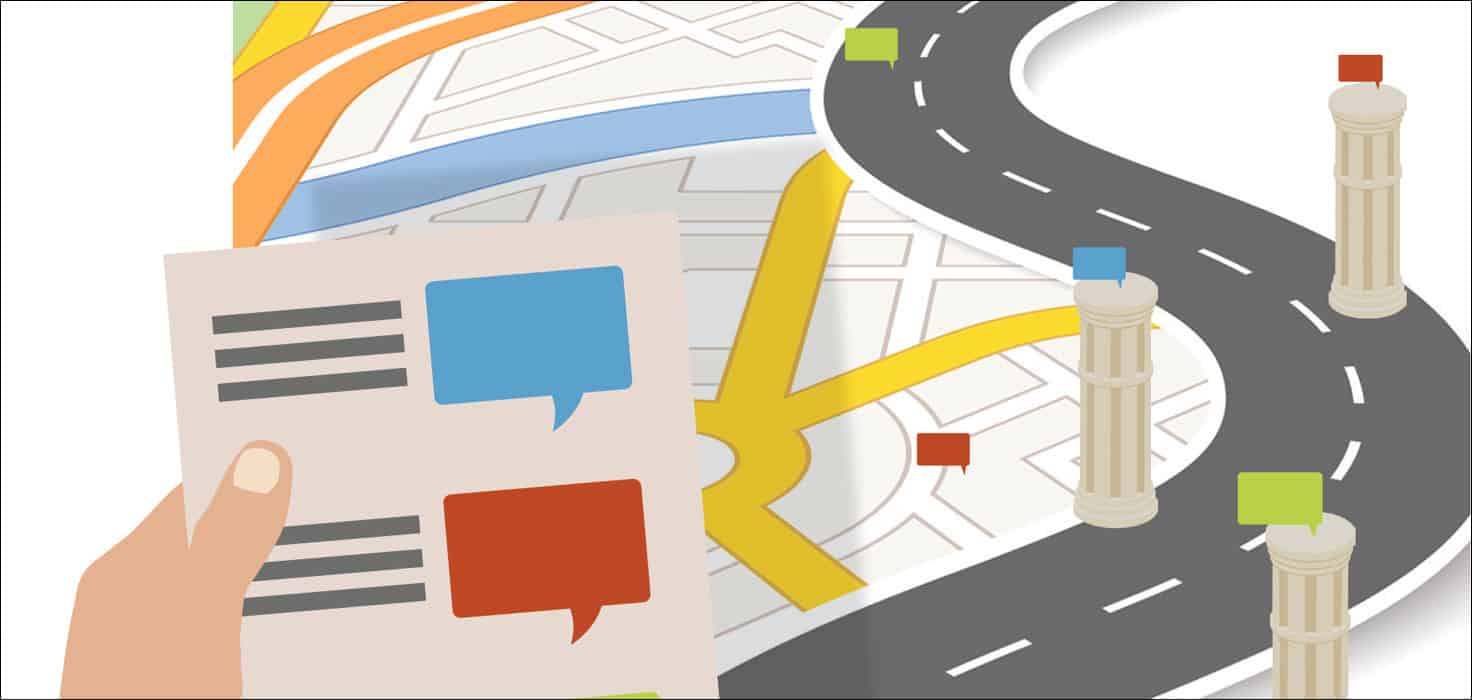Indulge me for a minute. Before you read this article, click on your company’s website and view the page associated with your flagship product. Jot down the key message headings. Now open the datasheet for that product and compare the message headings to those you wrote down. Do they match? Are they even close?

Message Map Basics
Product message maps are internal documents, typically owned by product marketing. They serve as a messaging structure for developing product-related marketing communications, such as web content, blogs, product collateral, and news announcements. And they also serve as a messaging structure for white papers, presentations, webinars, and product videos.
Message maps simplify the process of developing product-related content because they remove the need—and the temptation—to diverge from the agreed-upon messaging. By communicating the same overarching themes and supporting points across all marketing communications, you constantly reinforce these key product messages to your core audiences. This consistency strengthens your product positioning and minimizes misunderstandings and confusion.
Unfortunately, there’s no universal message map template or structure. If you ask 10 product marketers about message maps, you’ll probably get 11 responses. But at the very least, a solid product message map will contain three components.
Message Pillars
These are the most important ingredients of your product message map. You’ll use these words or phrases throughout your marketing communications to summarize your product’s core value propositions. Three message pillars are ideal because things that come in threes are usually more memorable. (Don’t believe me? Google “rule of three” to learn more.) Four message pillars are acceptable, two are too few and five are too many.
Proof Points
These statements validate and expand on your message pillars. Proof points often relate to product features or attributes, but may also pertain to third-party tests, industry awards, media reviews, or product certifications. They should appear in the decreasing order of importance that they impact revenue. When you develop content for multiple marketing communications, you can rephrase your proof points so that no two marketing communications read exactly the same, while still providing consistent messaging.
Product Positioning Statements
These typically include a product positioning phrase, sentence and paragraph. In the case of a one-product company, they may evolve into the corporate tagline or the standardized description about the company that appears at the end of press releases. More broadly, companies can use this information for subheadings on product brochures, within executive summaries of white papers, or as product descriptions for award nominations.
Message Map Creation
Building effective product message maps is a team effort that requires a lot of work. But when you are finished, you will be able to reap the benefits. Preparation Phase and document extensive information before attempting to create a message map. Here’s a list to get you started.
- Product information—Category, components/features, typical use cases, unique advantages (e.g., first, best, only), and potential buyer objections
- Target buyers—Buyer personas, customer needs and challenges, target verticals, target organization size, and target buyer job titles
- Competitive landscape—Names of competitive companies and their products, competitor advantages and disadvantages, and data from customer win/loss interviews
Messaging Workshop Phase
Book a meeting room for a day—preferably off-site to minimize interruptions—for you and six to eight colleagues (representing product management, product marketing, sales, and development) to review and agree on the relevance of the information you aggregated during the preparation phase. Use this information as the basis of a brainstorming session on candidate message pillars and underlying proof points. Your goal should be to achieve consensus on three or four message pillars.
Development Phase
Now it’s time to apply what you learned in your message workshop and the themes you developed to construct the first draft of your product message map. Polish them into succinct words or phrases and propose copy-ready proof points, listing them in decreasing order of significance to back up each message pillar. Then send the draft to your colleagues and ask them to validate the map or propose changes.
Maintenance Phase
The message map is a living document. As your product and market change, and competing products evolve, update it and your underlying marketing communications accordingly. Typically, message maps are refreshed prior to major product-update launches.
Message Map Benefits
When you create and consistently use a product message map, you reap a variety of benefits. First, it reinforces key messages. By repeating your message pillars and selected proof points in a variety of marketing communications, you’ll reinforce your product’s key value propositions with customers, partners, journalists, analysts, and even your sales team. It is especially helpful to prospects who are trying to discern your product from those of your competitors, and it will help increase your product’s win rate.
Next, a product message map will improve your understanding of the product. If the message map is succinct and steers away from the typical marketing hype, your product’s most compelling attributes will bubble up to the top. This will ensure your audience gains a positive impression of your product in less time, reducing sales cycles.
Finally, you will save time and effort. The person who develops content for your website is often different from the one who creates the product datasheet. And still others may develop content for white papers, presentations and other marketing communications. With a product message map in place, everyone is singing from the same sheet of music, reinforcing consistent message pillars and underlying proof points. And because everyone is using the same outline, it helps avoid expensive, time-consuming rework, even when you use outside agencies. At the end of the day, creating marketing communications based on well-constructed message maps will help increase win rates, reduce sales cycles and significantly reduce content-development costs.
When to Seek Out Assistance
With so many ingredients coming into play, crafting product message maps can be complicated. That’s why some companies seek help from outside experts. The following are four ways that external contractors and marketing agencies can help with preliminary information-gathering and the creation and execution of product message maps.
Gather Competitive Intelligence
A crucial prerequisite to message map development is knowing how your product compares to its competitors’ products. High-tech vendors often drink so much of their own Kool-Aid that they have difficulty objectively viewing their own products. By working with an unbiased outside contractor or agency, you can fill in competitive-intelligence gaps and validate—or dispel—existing assumptions about your product’s competitive advantages and disadvantages.
Conduct Customer Win/Loss Calls
Every high-tech vendor should regularly interview customers who chose its product over the competition and vice versa. I recommend conducting at least 10 win interviews and 10 loss interviews per competitor each year. Leveraging a third party to conduct these calls can often elicit more candid customer responses. The competitive insights gained from customer win/loss interviews will help validate—or sometimes contradict—the proposed pillars and proof points within your message map.
Facilitate Message Map Workshops
Leading message map workshops isn’t easy, especially if you’ve never done it before. Consider hiring an experienced outside resource to help accelerate the process and bring a fresh perspective to the table. Develop Content Once your message map is approved by stakeholders in sales, marketing, and engineering, it’s time to create or refresh content by incorporating the message pillars, proof points, and positioning statements. If your marketing team doesn’t have the right talent and bandwidth to do this, your best bet may be to work with an outside contractor or marketing agency. Just make sure they have the right background and experience to write about your product and industry.
Whether you do this in-house or hire an outside firm, creating an effective product message map is not only an art but also a science. And when it’s done right, your message map will pay dividends for many years to come.
Author
-

Steve Piper is co-founder and CEO of CyberEdge Group, an award-winning marketing and research consulting firm serving 100+ high-tech vendors. Steve has over 20 years of high-tech marketing and product management experience with companies like Citrix, NetIQ and Sourcefire. Steve has helped dozens of high-tech vendors refine their product messaging and positioning. Contact him at [email protected].








